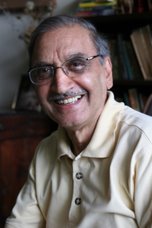How the revolt in Telangana ended
By Narendra Luther
The Communist Party in Hyderabad wanted the overthrow of the regime. In September 1947, their leaders gave a call to their cadres to 'intensify the liberation struggle and t take to arms'.
They acquired arms by all sorts of means including violence and looting of the Police Stations, army posts and landlords. Special squads called 'dalams' were constituted and the volunteers vowed to fight to death.
At its height before the Police Action, over 2000 villages ad been 'liberated' by the Communists in the Nalagonda district. There they introduced land reforms. Land in excess of 200 acres was taken over from landlords and distributed amongst the landless. Wages of agricultural were raised. Toddy tappers were given palmyrah trees at low price People contributed voluntary labour to dig canals, tanks and wells for irrigation. Wood was made available free from the government forestland for making agricultural implements and carts. People's courts were constituted. Widow remarriages were organized adult literacy through night schools was propagated A new social and political consciousness was created amongst the people.
They controlled vast stretches of countryside. The people in villages welcomed them and at one time, it seemed that a 'red revolution' was in the offing.
Then came the Police Action in September 1948. Three days later, the Communist Party was banned again. Some of the members of the Communist Party had already emerged in the open and others were preparing to do so. Inside the Party, a debate was raging whether the insurrection should be abandoned or carried on. Most of those who had been in the thick of the struggle were in favour of giving it up but others, sitting at a distance, favored its continuance. Ranadive, the General Secretary of the Party that the country had not yet become free. Nehru was an agent of the Anglo-American imperialists and so the struggle must continue.
Meanwhile the mood of the peasantry had also changed. The Military Governor had abolished the abhorrent jagirdari with an administrative order in August 1949. The civil administration had provided for the protection of the rights of tenants. What was there to fight for now? The new' regime seemed to be going on the right lines. When the late Chandra Rajeshwara Rao, who later rose to be the head of the Communist Party in India sought refuge in a field of his old hosts, the tribals in Damelakonta in Karimnagar, he perceived a certain lack of warmth on their part. As of old, he plucked some ears of millet and started roasting them to appease his hunger. Suddenly, he noticed that the tribals were looking around with shifty eyes. Instinct told him that he had been betrayed to the army. In fact, the solders were closing in on the field. He at once jumped, bolted and was barely able to escape.
The same villagers who used to welcome the dalams now begged them not to come to them. There was no protection against the army because the comrades did not stay in the village as they used to earlier. The police and the military followed their visit. It was then that the staying gained currency in the countryside that the communists were the lords of the night, and police the lords of the day.
The Indian army started pressing hard against the Communists by end of 1950. In 1951, they adopted the ruthless 'Briggs Plan' which has been implemented earlier in Malaysia. They burnt the tribal villages, collected all the tribals set them up in barbed-wire encampments and while members of the family were allowed to go to the forest to collect the produce, an adult male member was kept as a hostage to ensure their turn. Thus, having isolated and trapped the guerillas, they set out to annihilate them. The crunch was acute.
It had been easy to fight the Nizam's outfit; that was not the case with the Indian army. In a matter of three days, the communists lost two hundred of their men. It was been decided by the leadership to go underground. Most retreated into the forests of Godavari, and Karimnagar districts.
When the party leadership could not settle the issue of the continuance of the armed struggle, a delegation was called to Moscow in 1951 to discuss the issue with Stalin, the leader of International Communism. The delegation consisted of four leaders. Dange and Ajoy Gosh were in favour of the withdrawal. Chandra Rajeshwara Rao and Basavapunniah were against the proposal - or not quite sure.
The four men stayed in Moscow for six months. They had a number of meetings with the top leadership. They met Stalin in the Kremlin. Molotov, Malekov and Suzlov were also present. A stack of documents had been sent to Moscow. They had been translated into Russian.
Stalin asked for a map of the area in question. A map of India and another of southern peninsula were spread before him. He filled up his pipe, lighted it, and asked:
"Is there a foreign country close to the area?"
"No."
"Is there a port from which you can escape?"
"No."
"Is there any other sanctuary where you can take refuge?"
"No."
Stalin took a deep pull at his pipe, pushed the maps away to clear his table and observed: "In the circumstance it would seem difficult for you to sustain the resistance."
As a result of his verdict, he party line in India changed. But by that time, the Government of India had all but crushed the resistance physically.
That is how the Telangana armed struggle ended.
***
Archived by www.mygoldencopy.com
